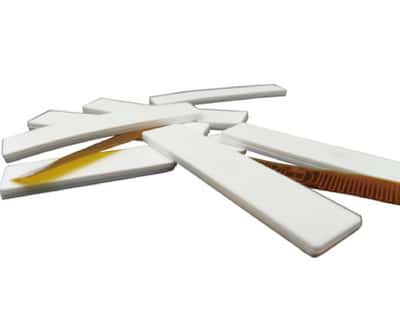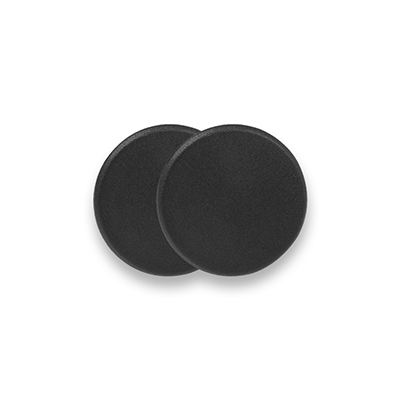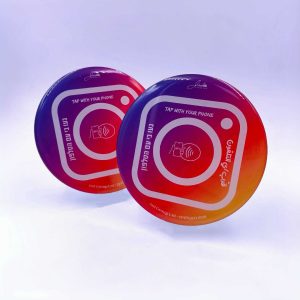In the age of wireless technology, it is necessary to understand certain acronyms. Well, we acknowledge that it is simple to mix things up. Therefore, in this article, we will contrast RFID and NFC.
What exactly is NFC?
Near Field Communication (NFC) is the abbreviation for Near Field Communication. It enables users to exchange digital information via touch. It is a contactless system. That eliminates the need to swipe your phone.
Simply activate your phone’s NFC connectivity and scan it using a device reader. Samsung phones, for instance, include an app called Samsung Pay. When you present your phone to the device, it is simple to transfer funds to your payment. Samsung Beam is another app that uses NFC to transfer data.
What exactly is RFID?
RFID is an abbreviation for Radio Frequency Identification. Similarly to NFS, it is a wireless technology. However, it is frequently used for access passes and key cards. It consists of two parts: tags and readers.
The reader is an antenna-equipped device. It transmits radio waves and receives RFID tag signals. When the reader detects your tag, it will confirm your identity and grant you access.
RFID is also used for inventory management, the tracking of equipment, and patient monitoring. RFID is also used by hotels and events to streamline the entry process.
RFID vs. NFC: The Actual Result
Although these two technologies have nearly identical functionality, they are entirely distinct. Continue reading to learn more about their distinctions.
RFID can function effectively at a distance of several feet. A gate access pass, for instance, can function from a distance. So that you do not have to drive dangerously to the toll booth.
NFC technology is more recent. It is an excellent implementation of RFID. It has a maximum range of four inches. Unlike RFID, communication is unidirectional. Only information flows from tags to the reading equipment.
Function and Objective
RFID is more suitable for tracking and locating assets in logistical functions. Additionally, it is superior for securing access and streamlining visitor monitoring.
NFC, however, is ideal for financial transactions.
If the department store you are shopping at accepts NFC payments, you can pay for your purchases with your cell phone.
Customers need only position their mobile wallets near the device. The contactless payment reader collects and processes the transaction data. The process is efficient and streamlined.
Capabilities
NFC and RFID have distinct functionalities. NFC-enabled products can provide a distinctive web-based experience for physical products. It facilitates the proliferation of the internet of things.
However, RFID has more specialized capabilities. But it does support tags. RFID is incapable of analyzing web content, including URLs and links.
Structure
NFC is typically present on smartphones and computers. It is immaterial. RFID, on the other hand, is compact and flexible. Each tag can take the form of a sticker and costs approximately 10 cents.
These stickers can be used to make access cards or wristbands. For instance, you may require RFID wristbands to gain access to your event.
Interpersonal Communication
Peer-to-peer communication is one of the features of Near Field Communication (NFC). NFC devices can function as both readers and tags. That means it can send and receive data with other NFC devices.
For instance, NFC smartphones can share information with one another. Simply tap the two devices together to connect them. They can eventually become data-sharing devices. Both phones will have identical copies of the information. As you have likely seen in advertisements, many smartphones can now provide customers with information.
RFID only reads information. For instance, you would know the number of attendees after an event. You will understand their purchasing power and behavior. Depends on how frequently they’ve worn their wristlets. However, you cannot extract or transfer this data to another RFID device.
Similar Technology
NFC builds upon RFID’s foundation and transforms its limitations into a feature. NFC can therefore only be used for short-range communication.
Since NFC is limited to short distances, it is a popular option for secure communication. This occurs between the devices of customers and payment systems.
Popular Uses
RFID is utilized more frequently for asset tracking and race timing. Additionally, it is utilized for inventory management and tool tracking. It is utilized by event businesses for access control and attendee tracking. On the other hand, NFC is typically used to facilitate online payment transactions or to gain access to exclusive content via an NFC-enabled smartphone. For instance, if you purchase a ticket using an NFC-enabled smartphone, you can simply scan your device to gain entry to the game.
RFID has advantages
RFID can offer your business a number of benefits, including asset tracking, inventory management, and time savings. This wireless technology has advantages for businesses of all sizes. By automating the process, it enables them to quickly increase efficiency and reduce operating expenses. Companies with RFID technology can improve asset utilization and product quality.
RFID is the central technology of the Internet of Things. The following advantages of RFID make it an attractive investment opportunity.
RFID provides a quick and reliable method for tracking assets. It applies to various production line components. It can be used to track high-value equipment or returnable containers.
RFID can be used to install fixed readers at strategic locations. It eliminates the need to manually submit forms. This eliminates the need for manual intervention on a production line. RFID increases efficiency and precision. You can depend on this technology to benefit your company.
RFID improves health and safety. Businesses can use it to monitor which containers require inspection. Additionally, they can use it to restrict access to these containers when certain conditions are not met. RFID enhances the inspection and reporting processes. Most importantly, it aids in customer satisfaction.
RFID augments revenue. Improving management and organizations leads to an increase in return on investment. It increases your company’s competitiveness. In addition, it improves customer satisfaction and creates new opportunities. As a result, your sales will increase and your margins will improve.
RFID technology is compatible with a variety of other technologies. It can be integrated with pallet handling automation. Additionally, it can be integrated with stock picking systems. It expedites the process from item ordering to shipment.
Disadvantage of RFID
RFID can be ten times more expensive than its predecessors, such as the barcode system. Due to the high cost of RFID implementation, many businesses continue to utilize the barcode system. Moreover, although keycards are convenient, there is no way to track them if they are lost. Lost keycards represent a loss for businesses. You must also determine how to access your locker if your keycard is lost.
Another disadvantage of RFID is that it cannot operate without power. RFID systems can be utilized by companies with generators. Others, however, may be required to switch to manual locking until power is restored.
Benefits of NFC
It comes as no surprise that many businesses employ NFC technology. The following are some well-known advantages of NFC usage.
NFC simplifies payment processes. Using a smartphone or tablet, customers can pay at the register with ease. Customers may utilize a mobile wallet from Google or Apple. With just a few taps, transactions can be processed. As there is no need to bring cash, this reduces the likelihood of theft or robbery.
NFC uses pin code. In the worst-case scenario, criminals could steal our phone but not our money. Without a special code, they cannot obtain or transfer funds. Customers adore businesses that accept smart payments for this reason.
NFC-enabled payments are more secure than credit cards with magnetic stripes. The former has more stringent security. Customers can trust that their financial transactions are secure. They are also personally secure.
NFC is versatile. It encompasses a variety of industries and services. It is used by businesses for payment platforms, mobile banking, restaurant reservations, and the purchase of train and movie tickets. It is also utilized for real-time updates.
NFC technology may be prohibitively expensive for some businesses. It requires a collection of interdependent devices and equipment. It also includes upgrade-dependent standards. Large retailers, such as Starbucks, have already integrated the system into their checkout procedures. However, small retailers continue to find it too costly. The expense of employing technicians and software installers can quickly escalate. Small businesses must be resourceful when preparing for NFC implementation.
Conclusion
NFC and RFID are essential to wireless technology. Many businesses are now using these technologies. Since they serve different purposes, you must determine what your business requires. This assists you in determining which technology is optimal for your business. RFID is available if you require something for tracking and entry access. However, if you need something to activate the payment system, NFC can be used. In any case, you need to talk to the right technology expert for help using their full potential.
















